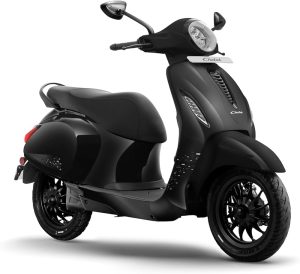A Detailed Technical Guide For Dirt Bike Oil

The gap between motorcycle oil and automotive oil widens every year. The automotive oil from just 5 years ago is very different from what is found on the shelves today.
The same holds true for oil which is formulated for motorcycle racing. Motorcycle specific oil addresses the issues most important to bikes: wet clutches, integrated gearboxes, low oil volumes, thermal degradation due to extreme operating temperatures, higher load & shear forces, increased foaming tendency & evaporation and increased formation of internal engine deposits.
Even the best automotive oils lack the specific qualities necessary to deal with motocross concerns.
Fortunately, many manufacturers have made great strides lately to improve the motorcycle oil formulations to hold-up to the high demands.
Motorcycle Oil Manufacturers such as MX Store offer quality products that lead the field in the lubrication arena.
Due to their popularity, this article will concentrate on today’s four-stroke motorcycle oils. However, many of the advancements in lubrication discussed equally applies to today’s two-stroke engine lubrication technology.
The following are some guidelines & recommendations for choosing the best motorcycle oil to suit motocross racing’s severe service conditions.
What Does “Motorcycle Specific API SG” Oil Mean?
If you read the manufacturer’s manual, nearly all motorcycles sold will state to use a Motorcycle Specific API SG engine oil. This terminology simply means an SG-rated oil can contain unlimited amounts of antiwear and extreme pressure additives to help the oil survive the extreme conditions and prevent metal to metal contact.
These additives are included by motorcycle oil manufacturers as a safeguard to protect your engine. It is important to understand that newer Automotive Oils such as API rating SJ, SL, and SM cannot contain these elevated amounts of additives.
The most important part of four-stroke engine oil is a proper formulation. A properly formulated oil starts with a high-quality base oil as this is the foundation. Next, the oil is blended with polymers and treated with antiwear additives. Finding the proper synergy between all these components is where the magic is.
Performance and Protection go hand-in-hand.
Are All API SG-Rated Motorcycle Oils Created Equal?
Absolutely Not!
There are many different variations, and nearly everyone has heard the terms synthetic oils and petroleum-based oils. Synthetic oils are generally regarded as superior in the lubrication industry. However, even in this category, there can be drastic differences in performance.
There are basically three different types of fluids that are currently marketed as synthetics: Group III, PAO, and Ester.
Esters are recognized worldwide as the “BEST OF THE BEST”.
There are significant performance differences between the lower end Group III and top of the line Ester Synthetics. Don’t be fooled by semi-synthetic blends. There are no guidelines set in place for this semi-synthetic that mandates a minimum percentage of synthetic content.
Do yourself a favour and look for the highest quality pure synthetic blend from a reputable manufacturer within the lubrication industry.
What Makes Synthetic Ester Oils Better?
Ester synthetics are the only type of base oils that are polar in nature. That’s right, this type of oil actually forms bonds (think of it as magnets) to the metal surfaces within your engine and drastically increase the load-carrying capabilities of the oil while simultaneously reducing friction, heat, and wear.
100% of Ester-based synthetic oils are used by the majority of factory race teams. This type of oil has been shown to protect engine components under severe race conditions when temperatures have exceeded 300 Degrees F without engine failure.
This type of oil was originally pioneered to lubricate jet turbine engines. Testing has shown high-speed magnetos melting down before cylinders have locked up using Ester-based synthetics.
Ester-Based Synthetic Oils excel in all oil performance categories such as Wet-Clutch Capability, Ability To Maintain Viscosity Over Temperature, High Temperature & High Load Performance, Wear Protection, Gear Performance, Evaporation Loss, Foaming Tendency, Oxidation Stability, Engine Cleanliness, and Rust Protection.
Final Word
Your bike’s oil decides the smoothness of its ride. Apart from various protective gear like helmets & MX boots, you must also pay equal attention and investment to ensure your bike’s oil job is on point.
We hope this article helped you better understand motorcycle oil.






